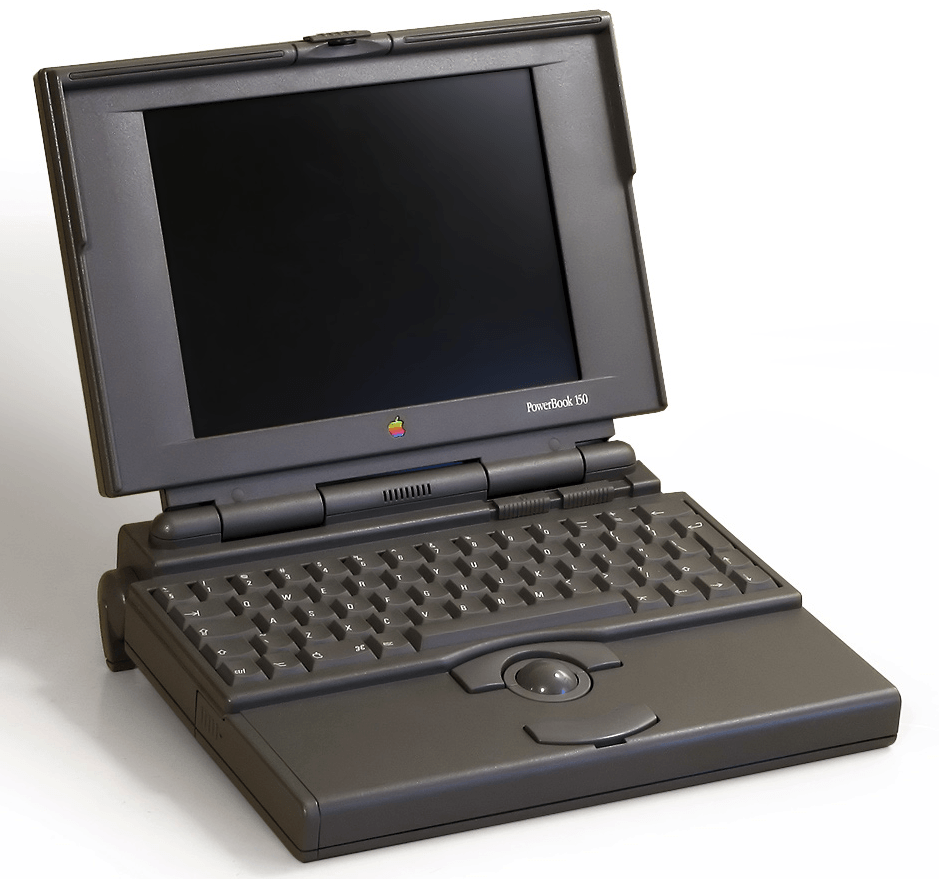 July 18, 1994: Apple ships its PowerBook 150 laptop, the company’s first truly affordable PowerBook — and the last to feature the original case design, which included a built-in trackball mouse.
July 18, 1994: Apple ships its PowerBook 150 laptop, the company’s first truly affordable PowerBook — and the last to feature the original case design, which included a built-in trackball mouse.
While it’s a normal sight to see students using Apple laptops today, there was a time when Mac notebooks were out of the reach of your average learner. That all changed in the 1990s — and the PowerBook 150 played an important role.
Starting at $1,450, the PowerBook 150’s price tag helped make it an important computer in Apple history. Early on, the price of laptops limited their audience. Just five years earlier the Macintosh Portable had carried a price tag of $6,500. The significantly cheaper PowerBook 150 cost of between $1,450 and $1,600, thereby making it an affordable to people looking for a PowerBook on a budget.
PowerBook 150 was part of Apple’s low-end PowerBook 100 line. It boasted a 33 MHz microprocessor, around 2.5 hours of battery life, and was fairly light for its day — weighing just 5.5 pounds.
It was also one of Apple’s more upgradable laptops in terms of storage, and the first of its series to incorporate a lithium-ion backup battery — which let users preserve the RAM contents in the event that a battery had to be replaced.
In other ways, however, the PowerBook 150 was very much compromised Mac. For example, it relied on a less expensive hard drive than other PowerBooks, and was the only laptop in the product line not to include an Apple Desktop Bus port, the bit-serial computer bus which connected low-speed devices to computers from 1986 to 1999. This meant that it was not possible to use it with an external mouse or keyboard.
On top of this, the laptop included a relatively poor LCD “passive matrix” display, which was vastly inferior to some of the higher-end displays Apple featured on its more expensive PowerBooks.
Do you remember the PowerBook 150? What was your first Apple laptop? Leave your comments and reminiscences below.



9 responses to “Today in Apple history: First affordable PowerBook goes on sale”
What an awful, ugly hunk of malformed plastic. Yes, laptops were not in large proliferation then but nobody in their right mind would jump the gun with this obvious non-starter. In my opinion, of course.
I guess you must be too young to remember those times. The PowerBook line has always been at the forefront of notebook design. By the time the 150 came out, the design was getting a bit long in the tooth and the 500 series was the sleek new that would come next. But, this was as nice as any laptop out there.
I do remember the times quite well, actually. From a British point-of-view though. Desktops were the order of the day and Toshiba laptops were the bigger sellers, although clunky but nowhere near as much as this heavy duty plastic rig. As for that tracker ball arrangement, I laugh my socks off.
Uhhhh….. yeah…. considering this keyboard/pointing device layout is now STANDARD on every laptop while those old Toshibas may not have even had a built in pointing device. And, in 1990, 5.5 pounds was as slim as they came (unless you went down to the few very expensive ultraportables like the Duo series)
Urm, tracker balls standard on every laptop? Really? What planet is that on, then?
Toshibas always had a trackpad, I think I’m arguing with myself here.
If my memory surfs me right, Toshiba and others had the keyboard at the front edge (really uncomfortable) and a joystick pointer until Apple came up with this design. Keep in mind that the PowerBook 150 was by then the last of this design. A quick search indeed shows Toshiba’s offerings in the same class, even a year or two later, had the same large plastic bezels and continued using the joystick, so not sure why Toshiba offered other products in the UK.
I remember my girlfriend’s IBM PC portable (LONG after I’d gone through a couple of iterations of Apple portables) having a stupid rubber nipple device smack in the middle of the keyboard. That trackball was great, and astonishingly accurate. I remember drawing artwork with it.
Give up. He’s just an @hole.
Why choose the 150? There was the 100 (manufactured by Sony) first, and then the 140. I bought a 145. I loved that machine, even though the specs now are laughable. It served me very well, for the day.